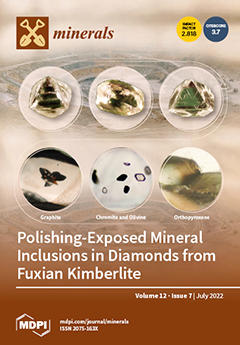In phytoremediation processes implemented in highly contaminated areas, there is a high risk of contaminant toxicity during the germination of freshly sown plants. In such conditions, it is recommended to support phytoremediation by using neutralizing additives. The present study aimed at assessing the
[...] Read more.
In phytoremediation processes implemented in highly contaminated areas, there is a high risk of contaminant toxicity during the germination of freshly sown plants. In such conditions, it is recommended to support phytoremediation by using neutralizing additives. The present study aimed at assessing the effect of the addition of mineral neutralizers (MNs), i.e., limestone, clay, and zeolite, to soil contaminated with copper (0, 200, 400, 600 mg kg
−1). Basic soil indicators were analyzed, such as pH, hydrolytic acidity (HAC), total exchangeable bases (TEB), cation exchange capacity (CEC), base saturation (BS), electrolytical conductivity (EC), total organic carbon (TOC), total nitrogen (Ntot), carbon to nitrogen ratio (C:N),, and interactions of soil micronutrients, such as Cu, Zn, Cd, Cr, Ni, Pb, Mn, and Fe with MNs. Copper contamination significantly decreased the soil pH and increased its HAC. A decrease in the share of TEB was found, which resulted in a decrease in the CEC and in BS of the soil. Among the additives, limestone had the most beneficial effect on reducing soil acidity, contributing to a significant increase in TEB, CEC, and BS. The least favorable effect was shown for clay, which generally caused the deterioration of soil properties. The MNs significantly increased the content of Zn, Cr, and Fe and lowered the content of Ni in the soil compared to the control. The demonstrated interactions indicate the diversified activity of MNs at different levels of soil contamination with copper.
Full article





